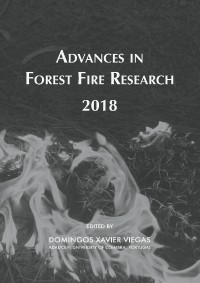Please use this identifier to cite or link to this item:
https://hdl.handle.net/10316.2/44619| DC Field | Value | Language |
|---|---|---|
| dc.contributor.author | Ramo, Rubén | |
| dc.contributor.author | Roteta, Ekhi | |
| dc.contributor.author | Bistinas, Ioannis | |
| dc.contributor.author | Bastarrika, Aitor | |
| dc.contributor.author | Chuvieco, Emilio | |
| dc.contributor.author | Werf, Guido van der | |
| dc.date.accessioned | 2018-11-09T22:35:44Z | |
| dc.date.accessioned | 2020-09-05T02:04:25Z | - |
| dc.date.available | 2018-11-09T22:35:44Z | |
| dc.date.available | 2020-09-05T02:04:25Z | - |
| dc.date.issued | 2018 | - |
| dc.identifier.isbn | 978-989-26-16-506 (PDF) | |
| dc.identifier.uri | https://hdl.handle.net/10316.2/44619 | - |
| dc.description.abstract | Burned area (BA) estimates based on moderate resolution (500 meters) MODIS instruments show that globally, 3,500,000 hectares burns each year. MODIS has difficulty capturing fires smaller than 25 ha and studies estimate this lost variability up to 24%. These estimates are highly uncertain. We use burnt area from the Sentinel 2 Small Fire Database (SFD) at 20m spatial resolution for six tiles (5x5º) in northern hemisphere Africa in areas that burn frequently. We find that in large fires (>100 ha), MODIS (MCD64) and SFD show a reasonable agreement (92%). However, MODIS misses most small fires (<25 ha) that add an additional 37% area burnt. SFD reveals a total burnt area that is 50% higher than MODIS for the studied areas. We then calculate fire emissions from the SFD and we compare to the Global Fire Emissions Database GFED4 and GFED4s. The contribution of small fires in terms of total burned area and emissions has been significantly underestimated and we find emissions up to 56% higher than GFED4 and 37% higher than GFED4s for this regions. This analysis highlights the importance of accounting for small fires for both burned area and fire emissions. | eng |
| dc.language.iso | eng | - |
| dc.publisher | Imprensa da Universidade de Coimbra | por |
| dc.relation.ispartof | http://hdl.handle.net/10316.2/44517 | por |
| dc.rights | open access | - |
| dc.subject | Sentinel 2 | eng |
| dc.subject | MODIS | eng |
| dc.subject | small fires | eng |
| dc.subject | burned area | eng |
| dc.subject | emissions | eng |
| dc.title | Biomass burning emissions using the Sentinel 2 small fire database | por |
| dc.type | bookPart | por |
| uc.publication.firstPage | 933 | - |
| uc.publication.lastPage | 940 | - |
| uc.publication.location | Coimbra | por |
| dc.identifier.doi | 10.14195/978-989-26-16-506_102 | - |
| uc.publication.section | Chapter 5 - Decision Support Systems and Tools | por |
| uc.publication.digCollection | PB | por |
| uc.publication.orderno | 102 | - |
| uc.publication.area | Ciências da Engenharia e Tecnologias | por |
| uc.publication.bookTitle | Advances in forest fire research 2018 | - |
| uc.publication.manifest | https://dl.uc.pt/json/iiif/10316.2/44619/200900/manifest?manifest=/json/iiif/10316.2/44619/200900/manifest | - |
| uc.publication.thumbnail | https://dl.uc.pt/retrieve/11016073 | - |
| uc.publication.parentItemId | 55072 | - |
| uc.itemId | 68182 | - |
| item.grantfulltext | open | - |
| item.fulltext | With Fulltext | - |
| Appears in Collections: | Advances in forest fire research 2018 | |
Files in This Item:
| File | Description | Size | Format | |
|---|---|---|---|---|
| biomass_burning_emissions_using_the_sentinel_2.pdf | 859.26 kB | Adobe PDF |  |
Items in DSpace are protected by copyright, with all rights reserved, unless otherwise indicated.
